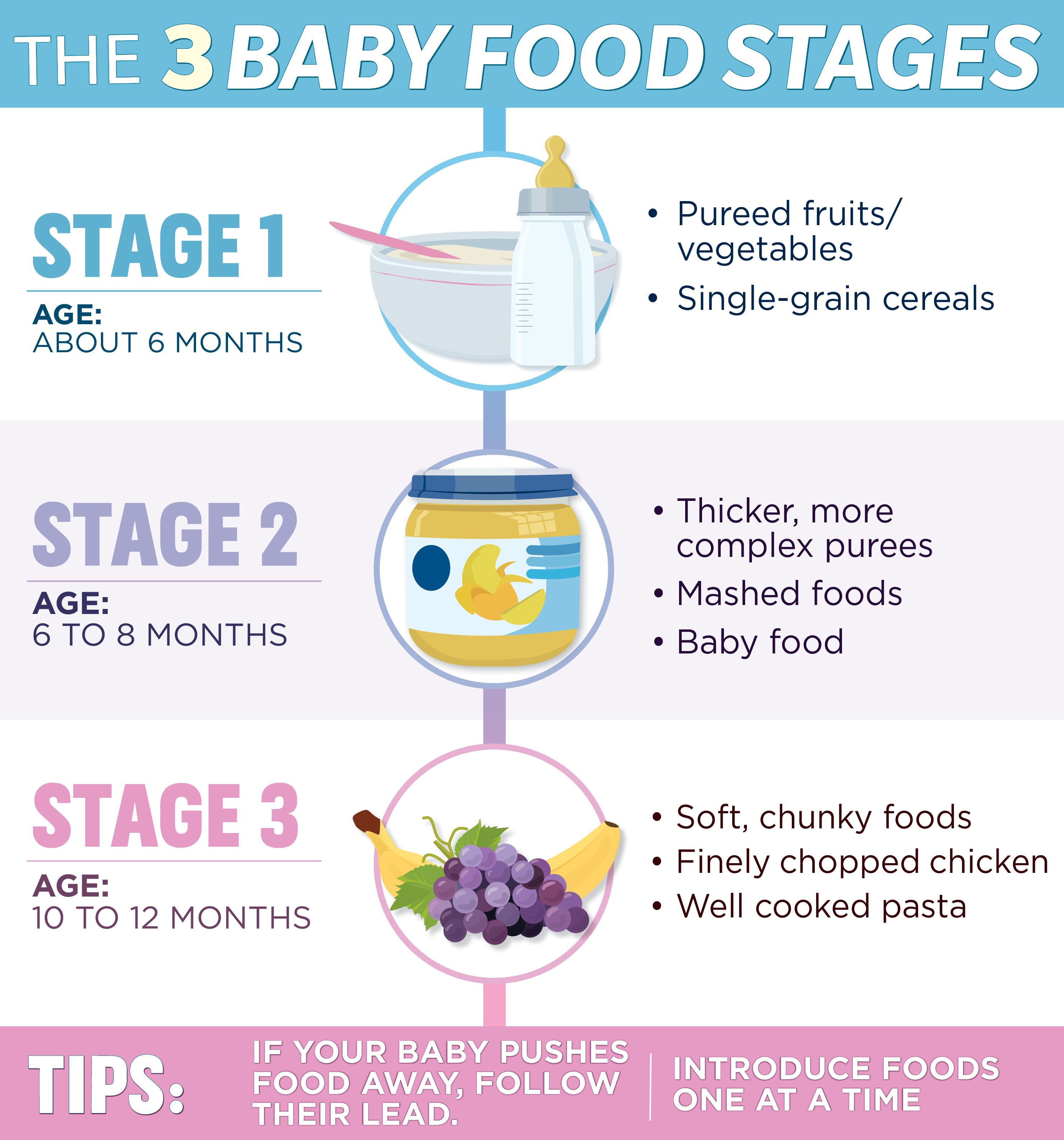Like most aspects of parenting, knowing what to feed your baby (and when!) is part art and part science. But understanding the baby food stages can help.
Babies depend on breast milk or formula for the first four to six months of their lives. After that, it’s time to watch for signs that Baby is ready for the next stage. Here’s a peek at the three main baby food stages and what to look for. (Don’t miss the free printable, below!)
Interested in baby-led weaning? Read this first.
Stage 1 Baby Food
Typical Age: About 6 months
Readiness: Babies should be introduced to solid foods only after they are sitting up with little to no support and can hold up their heads without help. You also might notice Baby is interested when others eat or reaches for the food on their plate—that’s a sign she’s ready for her own meal.
Psst: This is the best way to introduce your baby to solid foods.
Stage 1 Tips:
- Even once you begin purees, a baby’s main nutrition source will continue to be breast milk or formula until he’s about 1 year old.
- As you introduce foods, do so one food at a time so you can monitor for any adverse reactions.
- Babies have tiny tummies. Just a few spoonfuls of food at a time is sufficient. (Learn more about this first baby food stage.)
Food Ideas: During this stage, try introducing simple, single-grain cereals, You can add a little breast milk or formula to them so Baby gets accustomed to the taste and texture. Single fruit or veggie purees are other great options—think sweet potatoes, peas, carrots, peaches and avocados. (You can check out our entire list of first foods here.)
Stage 2 Baby Food
Typical Age: 6 to 8 months
Readiness: Look to see if your baby is drooling less and pushing less food out of his mouth.
Stage 2 Tips:
- While purees are thicker and have some small chunks, remember your baby is still new to eating food, so keep things very soft.
- Babies have a good mechanism for knowing when they are done eating. If your baby pushes food away, follow her lead.
Food Ideas: Consider purees that combine flavors—you can even add meat! You may also want to include soft, mashed foods like banana, sweet potato or carrot. You can, of course, buy baby food (like these top organic brands) or make your own.
Stage 3 Baby Food
Typical Age: 10 to 12 months
Readiness: Is your baby swallowing well? Are his teeth coming in? Is he doing well with thick purees? Able to use his hands to put food in his mouth? Perhaps even attempting to hold a utensil? Then, it may be time to move him up to soft, chunky foods.
Stage 3 Tips:
- The American Academy of Pediatrics recommends serving 4 ounces of food at each meal (that’s equivalent to about one small jar of baby food).
- To help prevent choking, make sure foods like hot dogs, grapes and more are cut into small pieces.
- Stay away from hard foods like seeds, nuts and popcorn.
Food Ideas: Small chunks of banana, scrambled eggs, finely chopped chicken, cooked chunks of carrots or potatoes and well-cooked pasta are good places to start.
Once baby is a little older, they’ll love these toddler meals!

The post The 3 Baby Food Stages, Decoded appeared first on Taste of Home.
Stephanie R. Conner